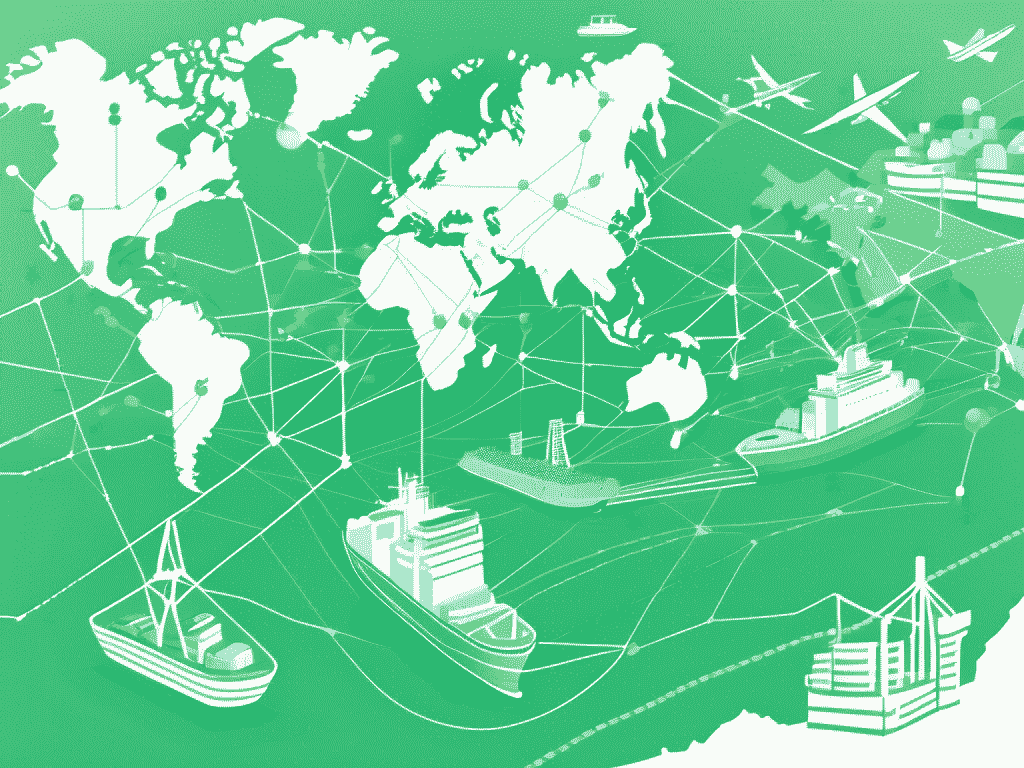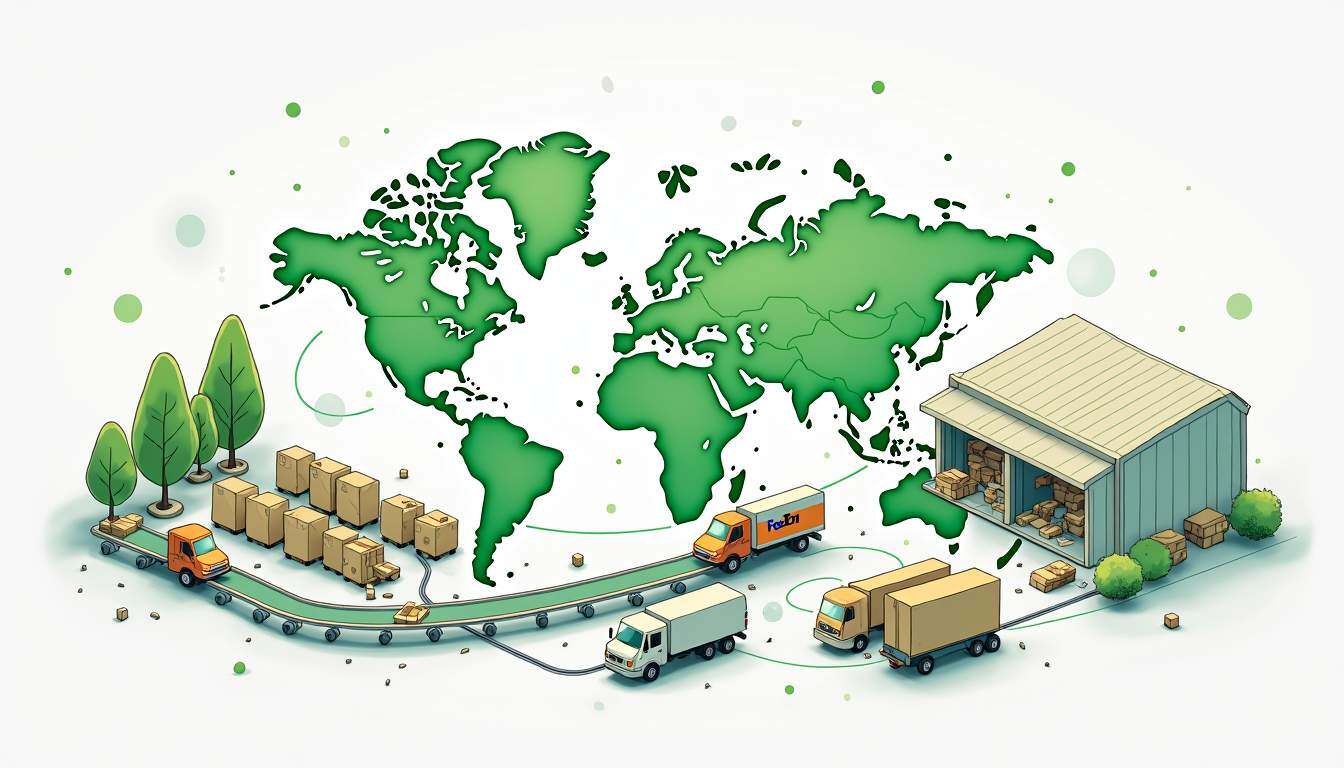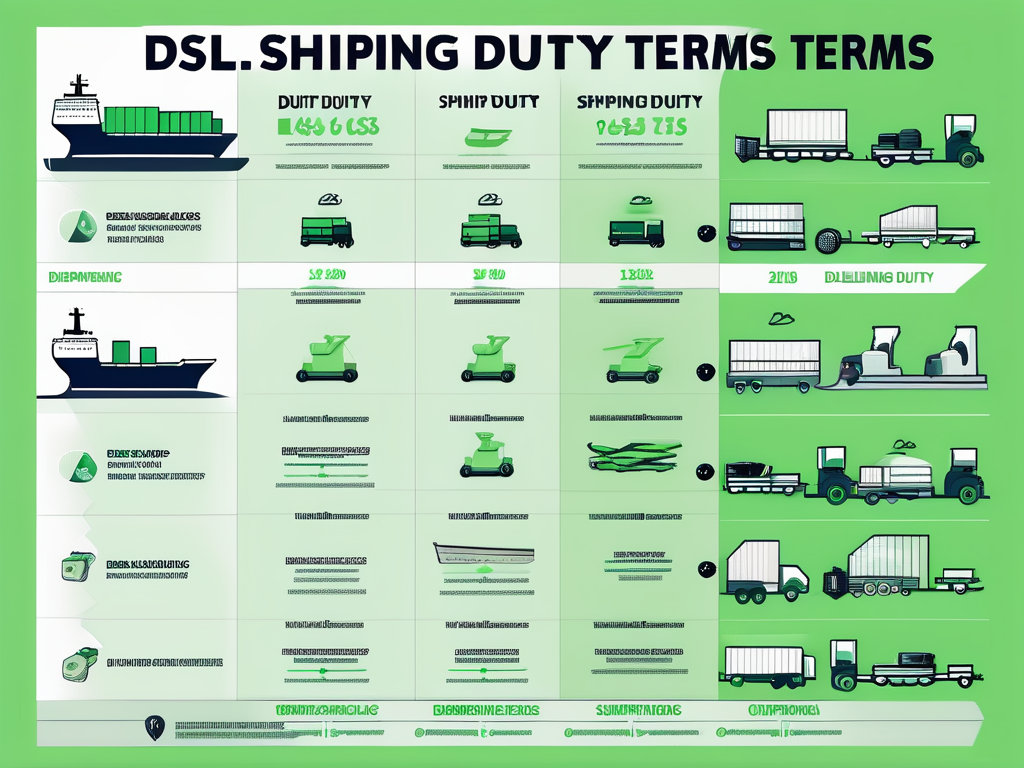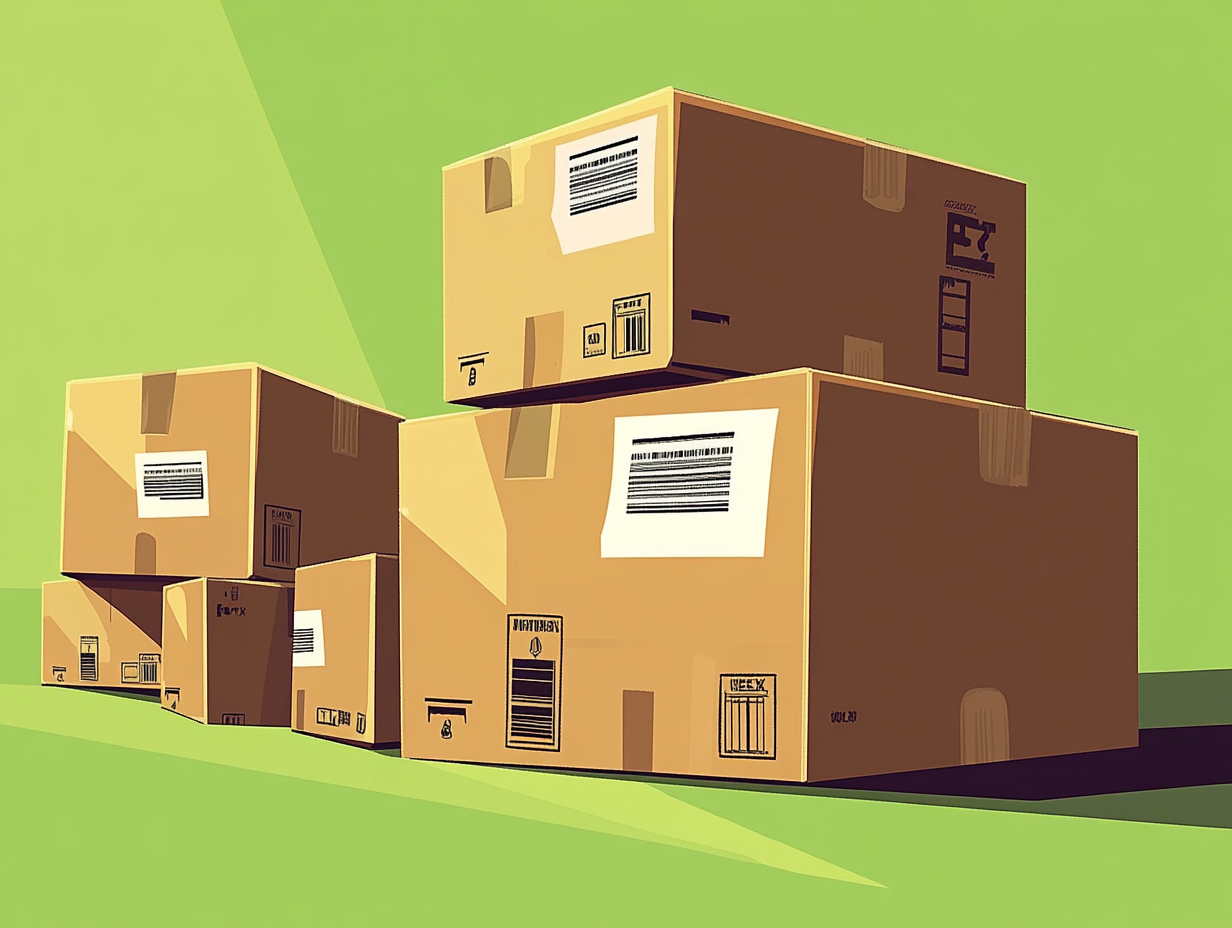Share this
What Does the Future of Cross-Border Shipping Hold?
by Shipfusion Team on Oct. 30, 2024

Cross-border shipping is what makes international expansion as an ecommerce business possible. But with shifting regulations and new logistics technologies emerging, staying competitive and cost-effective is no easy feat. This article unpacks the innovations shaping the future of cross-border shipping, practical strategies for ecommerce businesses, and what the next decade holds for those ready to take their business global.
When and Why Is Cross-Border Shipping Relevant?
In today’s interconnected world, cross-border shipping is a necessity for businesses seeking growth opportunities. Ecommerce allows companies to access customers in various countries, thus amplifying their market potential. This relevance stems from the need for diversification and the ability to cater to a global audience.
The Global Ecommerce Boom: Expanding Beyond Domestic Markets
The explosion of ecommerce has changed the way consumers shop. With platforms like Amazon and Alibaba leading the charge, customers have grown accustomed to purchasing goods from other countries. According to a report by eMarketer, global retail ecommerce sales surpassed $7 trillion in 2022 – a trend expected to continue as online shopping gains traction.
Companies are increasingly tapping into international markets to reach new segments. A small business can now sell handmade products to customers in Europe, Asia, and beyond, provided they have an effective cross-border shipping strategy that meets customers' expectations for timely delivery and product integrity. This shift not only broadens the customer base but also encourages innovation, as businesses adapt their offerings to meet diverse consumer preferences across different cultures.
Moreover, the rise of social media and digital marketing has further fueled this trend. Businesses can now leverage targeted advertising to reach potential customers in specific regions, tailoring their messaging to resonate with local audiences. This ability to connect with consumers on a personal level enhances brand loyalty and drives sales, making cross-border shipping not just a logistical challenge, but a strategic advantage in a competitive marketplace.
The Challenges of Scaling Cross-Border Shipping Operations
Despite the opportunities, scaling cross-border shipping comes with its own set of challenges. Different countries have varying customs regulations, which can complicate the shipping process. Additionally, tariffs and duties can significantly affect pricing, making it hard for businesses to remain competitive.
Logistics issues also arise due to the intricate nature of international shipments. For instance, shipping delays can occur due to customs inspections or unpredictable route conditions. Businesses must also navigate language barriers and cultural differences, which can impact customer services. Understanding local preferences and expectations is crucial; what works in one market may not resonate in another. This necessitates a robust market research strategy to ensure that products and services are tailored appropriately.
Furthermore, businesses must invest in technology to streamline their cross-border operations. Advanced tracking systems and data analytics can provide insights into shipping performance and customer behavior, allowing companies to make informed decisions. By optimizing their supply chains and enhancing transparency, businesses can mitigate some of the risks associated with international shipping, ultimately leading to a more seamless experience for their customers.
What Innovations Are Shaping the Future of Cross-Border Shipping?
As the demand for efficient cross-border shipping grows, so does the need for innovative solutions. Advancements in technology are transforming global logistics, providing new tools to streamline processes.
AI and Automation: How They’re Transforming Global Logistics
Artificial intelligence (AI) is one of the major forces behind the transformation of logistics. AI-driven algorithms analyze shipping routes, predict demand, and identify the most cost-effective shipping options. Companies like DHL have implemented AI to optimize their operations, reducing delivery times and costs. Automation is also playing a significant role in warehouses, where robotic systems speed up order fulfillment and reduce human error.
Moreover, AI applications are improving customer experiences. Chatbots, for instance, can handle inquiries about shipping statuses or address concerns, providing real-time updates to customers while freeing up human agents for more complex issues. This shift not only enhances efficiency but also allows businesses to focus on strategic growth, as they can allocate resources more effectively. Additionally, predictive analytics powered by AI can forecast trends in shipping demands, enabling companies to adjust their logistics strategies proactively, thus staying ahead of the competition.
Blockchain and Transparency In International Supply Chains
Blockchain technology is revolutionizing how information about shipments is shared across the supply chain. Known for its ability to provide transparency, it allows all parties involved – retailers, shippers, and customers – to track shipments in real-time and verify their authenticity. Companies like IBM and Maersk have partnered to use blockchain, resulting in reduced documentation errors and enhanced trust among stakeholders.
This heightened transparency is crucial in cross-border shipping, as consumers increasingly demand assurance regarding product origins and shipping processes. With blockchain, fraudulent claims can be minimized, which is particularly important for high-value goods. Furthermore, the immutable nature of blockchain records means that any discrepancies can be traced back to their source, fostering accountability among all parties involved. This level of transparency not only builds consumer trust but also encourages compliance with international regulations, making it easier for businesses to navigate complex customs processes and avoid potential fines.
Practical Steps for Ecommerce Businesses to Adapt to the Future
As international markets expand, it is essential for ecommerce businesses to take proactive steps to optimize their cross-border shipping capabilities. Companies must streamline their operations to stay competitive and meet consumer expectations.
Optimizing International Fulfillment for Speed and Cost
To remain competitive, businesses should focus on enhancing their fulfillment processes. Partnering with fulfillment centers located near international borders can optimize transit times and reduce shipping costs. For example, utilizing third-party logistics providers that specialize in cross-border shipping can significantly enhance service quality.
Moreover, companies can adopt multi-carrier shipping strategies to identify the best shipping rates for different destinations. Utilizing software solutions that integrate multiple shipping carrier options allows businesses to dynamically choose the best method for each order. This flexibility not only improves customer satisfaction by providing faster delivery options but also helps businesses manage their logistics costs more effectively, ultimately boosting their bottom line.
In addition to these strategies, ecommerce businesses should also consider implementing real-time tracking systems. By providing customers with the ability to track their orders at every stage of the shipping process, companies can enhance transparency and build trust. This level of visibility can significantly reduce customer inquiries and complaints, as buyers are kept informed about their order status, leading to a more positive shopping experience.
Overcoming Regulatory Hurdles with Digital Solutions
The complex nature of international regulations can be daunting for ecommerce businesses. Many companies are now embracing digital solutions to navigate the regulatory landscape more efficiently. Technologies such as automated customs compliance and digital trade documentation enable businesses to streamline operations and reduce the risk of penalties incurred due to non-compliance.
Additionally, ecommerce businesses can use software that updates them on international trade regulations and tax requirements to avoid costly mistakes. These digital tools facilitate smoother transactions across borders, making it easier for businesses to manage the complexities involved in international shipping. Furthermore, integrating artificial intelligence into these systems can help predict regulatory changes and adapt business strategies accordingly, ensuring that companies remain compliant and competitive in an ever-evolving market.
Moreover, companies can benefit from participating in trade associations or networks that provide resources and support for navigating international regulations. By collaborating with other businesses and sharing insights, ecommerce companies can better understand the challenges they face and develop effective strategies to overcome them. This collective knowledge can be invaluable in fostering innovation and adapting to the fast-paced nature of global commerce.
What Does the Future Hold for Cross-Border Shipping?
As we look towards the future, cross-border shipping is poised to undergo further changes that will redefine how global logistics operate. Key trends suggest a move towards more sustainable practices and advanced technology integration.
The Role of Sustainable Practices in Global Logistics
Sustainability is becoming an essential consideration in shipping logistics. With an increasing focus on climate change, many logistics companies are turning to eco-friendly practices. For instance, initiatives like carbon-neutral shipping and the use of electric vehicles for delivery are gaining traction.
Furthermore, packing materials are also evolving. Companies are exploring biodegradable and recyclable packaging solutions to reduce waste. As consumers become more environmentally conscious, businesses that adopt sustainable practices in their supply chains will likely gain a competitive advantage.
Additionally, the shipping industry is beginning to implement circular economy principles, where materials are reused and recycled rather than discarded. This shift not only minimizes waste but also fosters a more sustainable production cycle. Companies are increasingly collaborating with suppliers and customers to create closed-loop systems that enhance resource efficiency and reduce environmental impact. Such initiatives are not just beneficial for the planet; they can also lead to cost savings and improved brand loyalty among eco-conscious consumers.
Predictions: What Will the Cross-Border Shipping Landscape Look Like in 2030?
Looking ahead to 2030, predictions suggest that cross-border shipping will be more automated, faster, and increasingly integrated with cutting-edge technology. The use of AI and machine learning will likely be commonplace, enabling businesses to forecast demand and optimize shipping routes with even greater efficiency.
Moreover, the continued rise of ecommerce will lead to an expanded focus on hyper-local fulfillment centers, reducing shipping times and increasing customer satisfaction. By utilizing localized warehousing solutions, companies will be better positioned to meet international customer demand swiftly and effectively.
In addition to these advancements, the integration of blockchain technology is expected to revolutionize cross-border shipping by enhancing transparency and security in transactions. With blockchain, every step of the shipping process can be recorded and verified, reducing the risk of fraud and ensuring that goods are tracked accurately from origin to destination. This level of transparency will not only build trust among stakeholders but also streamline customs processes, making international shipping smoother and more efficient.
Embrace the Future of Cross-Border Shipping with Shipfusion
Heading towards 2030, businesses that embrace innovation will find new opportunities for growth and customer engagement across global markets. There’s no better time to act than now, and no better partner to trust in the journey than Shipfusion. Our 3PL leads the pack in order accuracy and turnaround time. You’ll benefit from industry-best performance plus the kind of expertise in cross-border shipping that can only be gained through extensive experience like ours.
Take the first step in equipping your ecommerce business for the future of cross-border shipping – request a free quote from Shipfusion today.
Share this
You May Also Like
These Related Articles

Let’s Talk the Nuances of FedEx Ecommerce Fulfillment

DDP vs DDU: Choosing the Right Shipping Terms for Your Business

How to Create a FedEx Prepaid Shipping Label: A Step-by-Step Guide
- October 2025 (1)
- September 2025 (6)
- August 2025 (8)
- July 2025 (16)
- June 2025 (22)
- May 2025 (27)
- April 2025 (27)
- March 2025 (26)
- February 2025 (26)
- January 2025 (34)
- December 2024 (16)
- November 2024 (22)
- October 2024 (22)
- September 2024 (27)
- August 2024 (9)
- July 2024 (8)
- June 2024 (5)
- May 2024 (8)
- April 2024 (7)
- March 2024 (6)
- February 2024 (6)
- January 2024 (5)
- December 2023 (3)
- November 2023 (3)
- October 2023 (5)
- September 2023 (4)
- August 2023 (2)
- July 2023 (1)
- June 2023 (4)
- March 2023 (2)
- October 2022 (1)
- September 2022 (5)
- August 2022 (4)
- July 2022 (7)
- June 2022 (4)
- May 2022 (4)
- April 2022 (6)
- March 2022 (2)
- February 2022 (1)
- January 2022 (3)
- December 2021 (2)
- November 2021 (4)
- October 2021 (2)
- September 2021 (5)
- August 2021 (4)
- July 2021 (4)
- June 2021 (3)
- May 2021 (2)
- April 2021 (3)
- March 2021 (3)
- February 2021 (3)
- January 2021 (2)
- December 2020 (4)
- November 2020 (2)
- October 2020 (4)
- September 2020 (2)
- July 2020 (5)
- June 2020 (4)
- May 2020 (2)
- April 2020 (2)
- March 2020 (4)
- February 2020 (1)
- December 2019 (1)
- May 2018 (1)
- March 2018 (2)
- February 2018 (3)
- January 2018 (3)
- November 2017 (3)
- July 2017 (4)
- March 2017 (3)
- February 2017 (5)
- January 2017 (3)
- December 2016 (4)
- November 2016 (6)
- October 2016 (6)
- October 2015 (1)
- September 2015 (1)
- June 2015 (3)
- May 2015 (3)
- August 2014 (1)
- July 2014 (1)
- March 2014 (1)
- February 2014 (1)
.png?width=3334&height=468&name=Shipfusion_Logo%20Color%20Light%20(1).png)
.png?width=2850&height=400&name=Shipfusion_Logo%20Color%20Light%20(1).png)